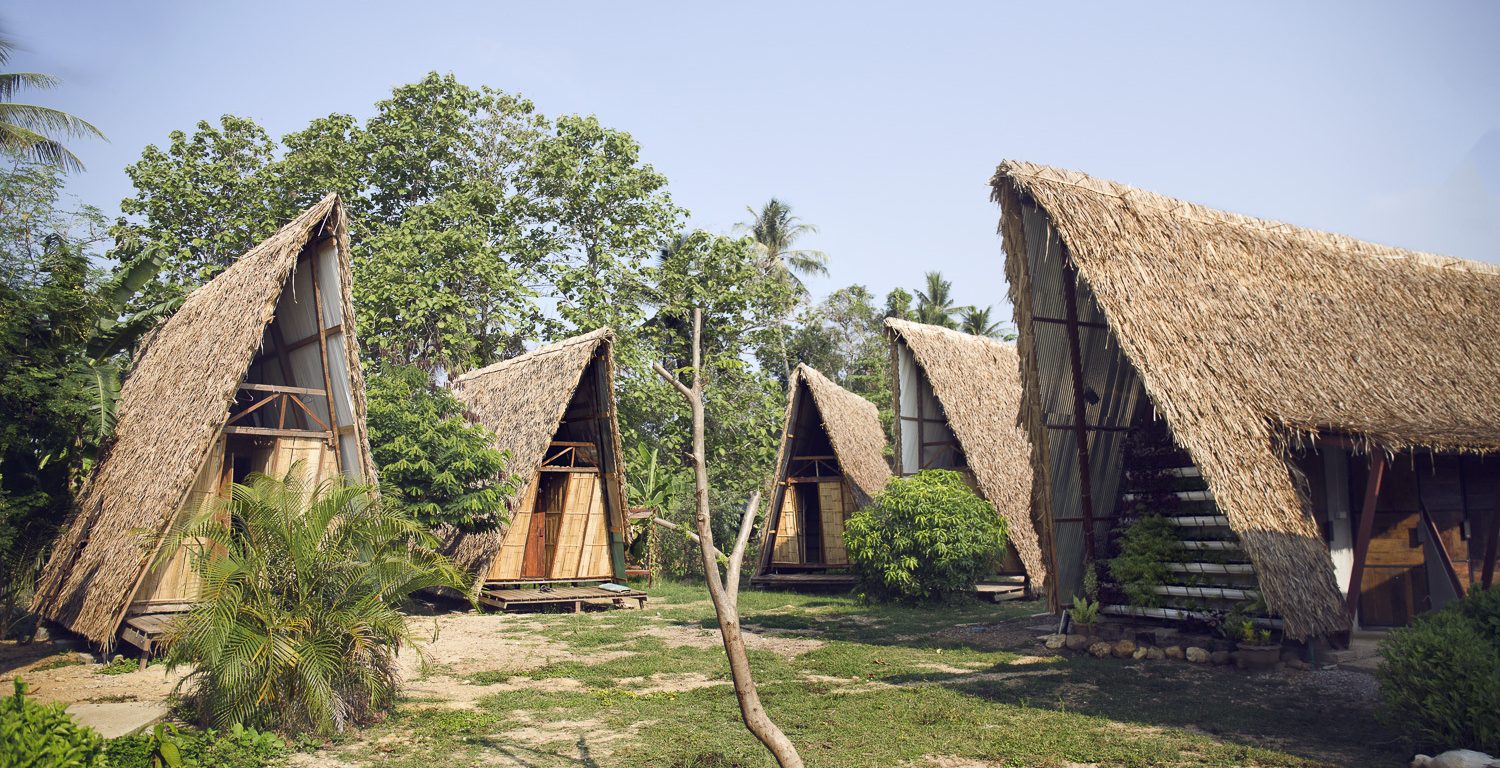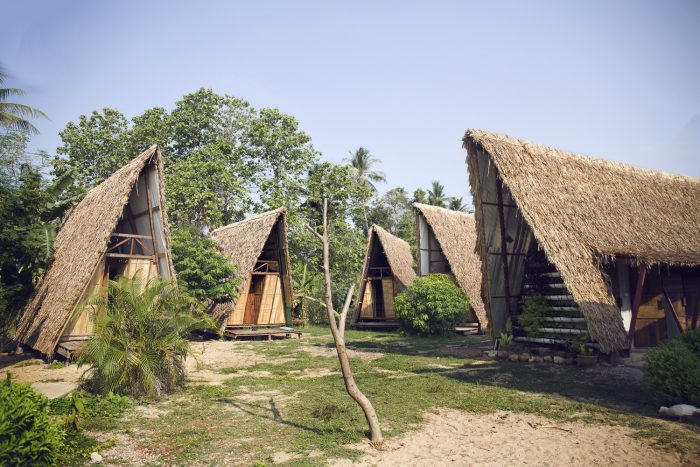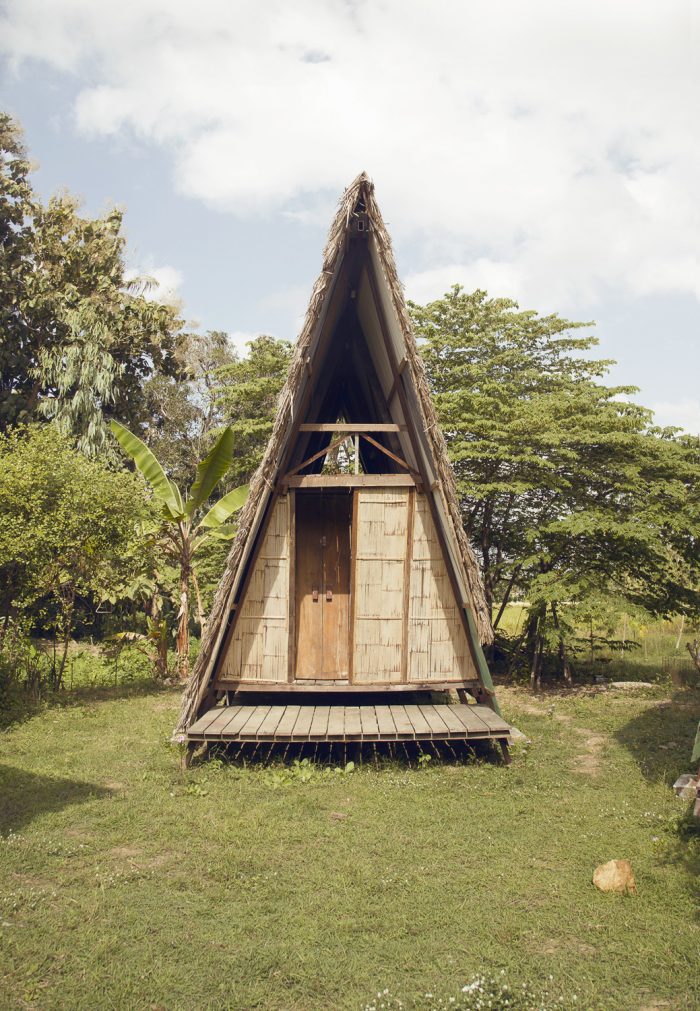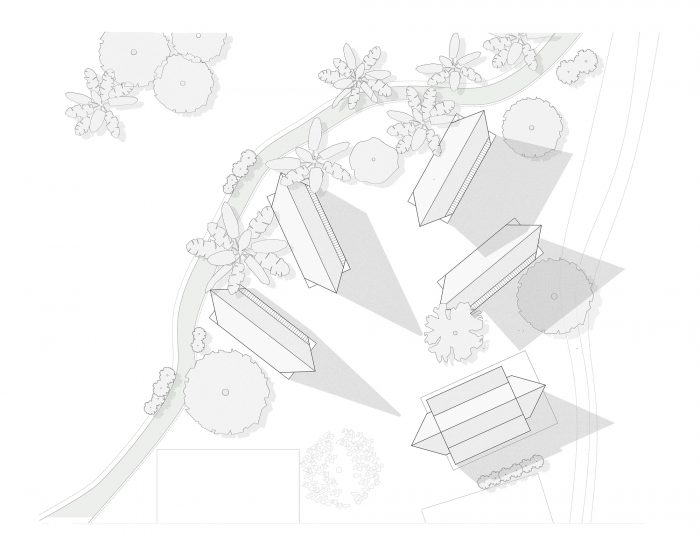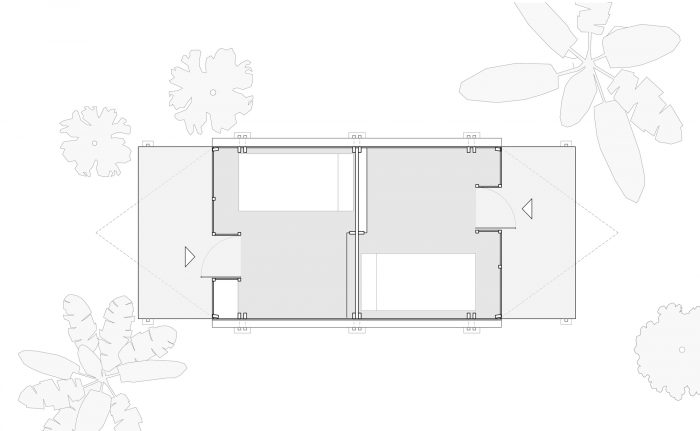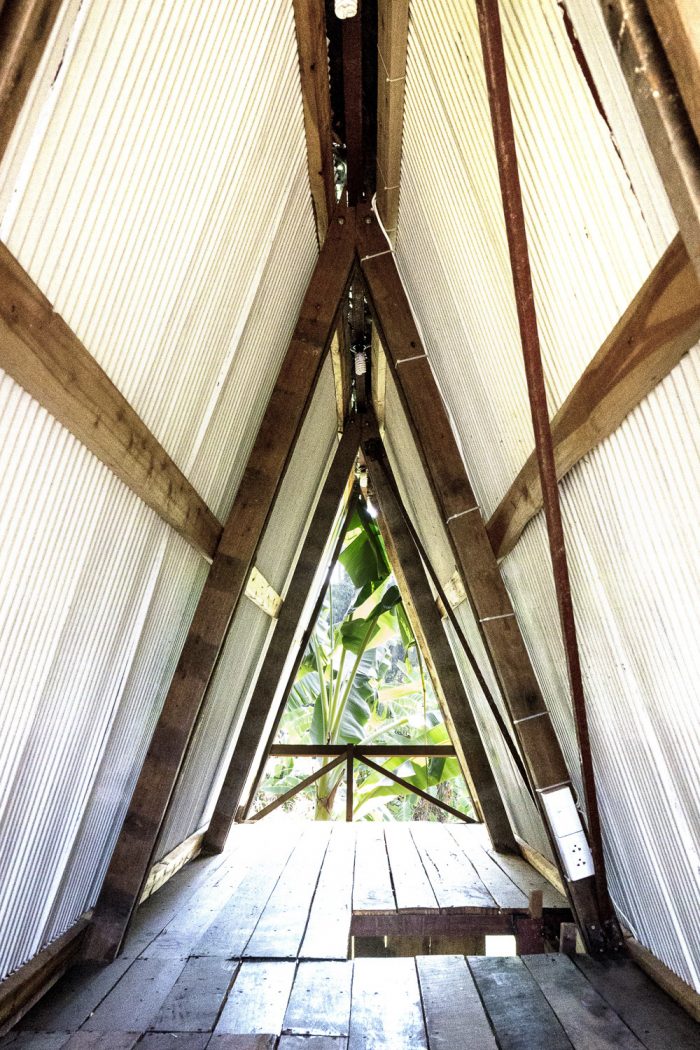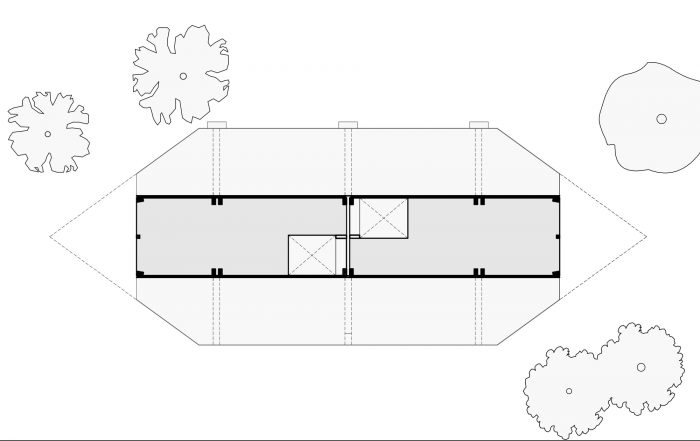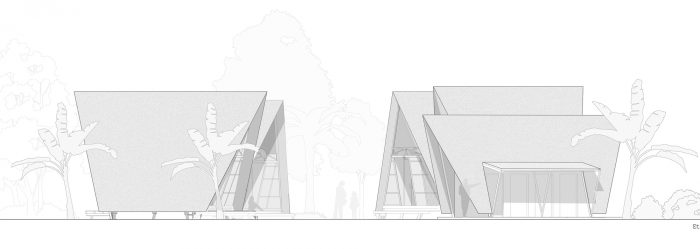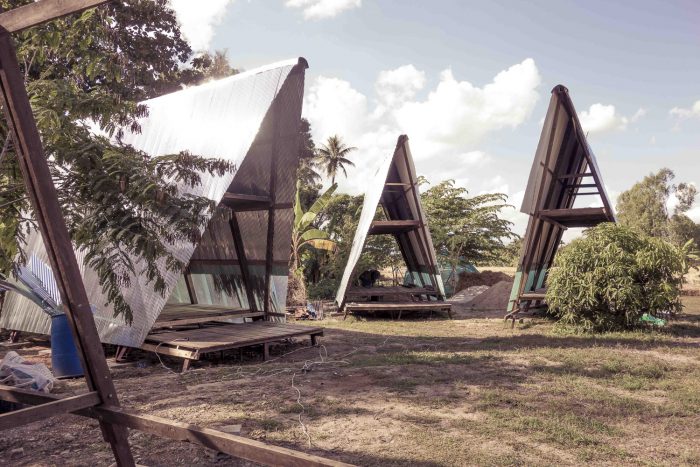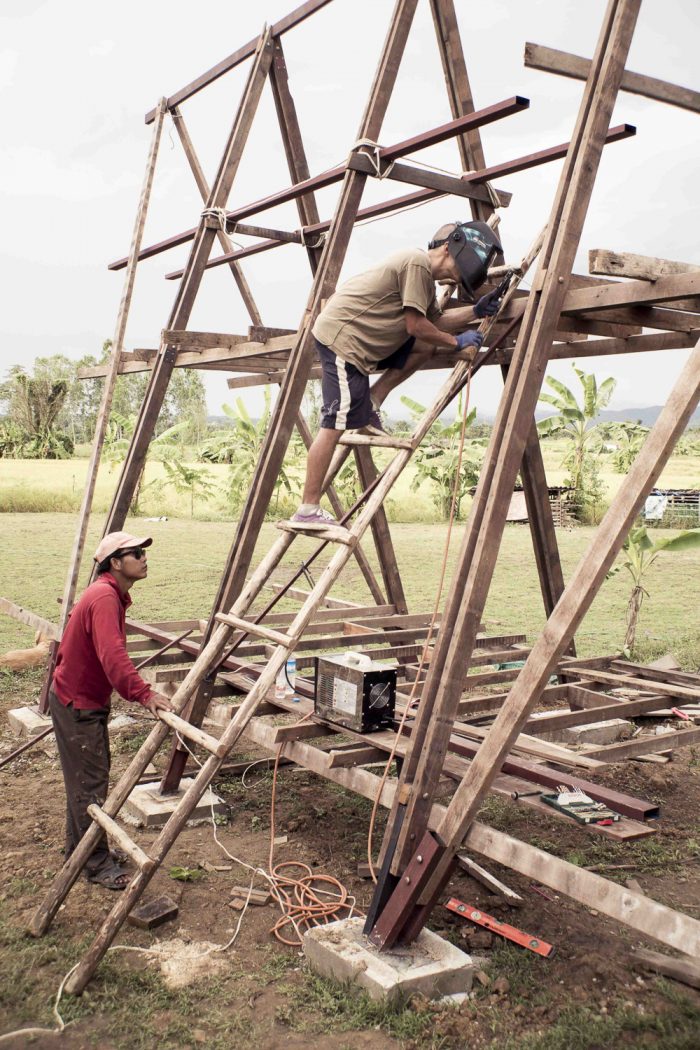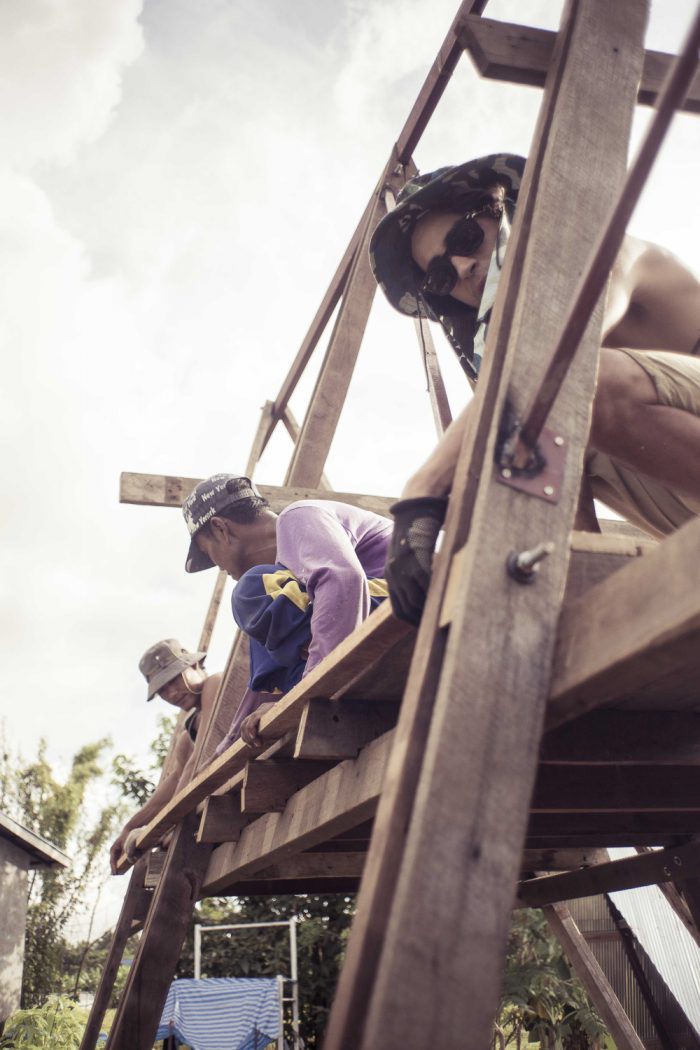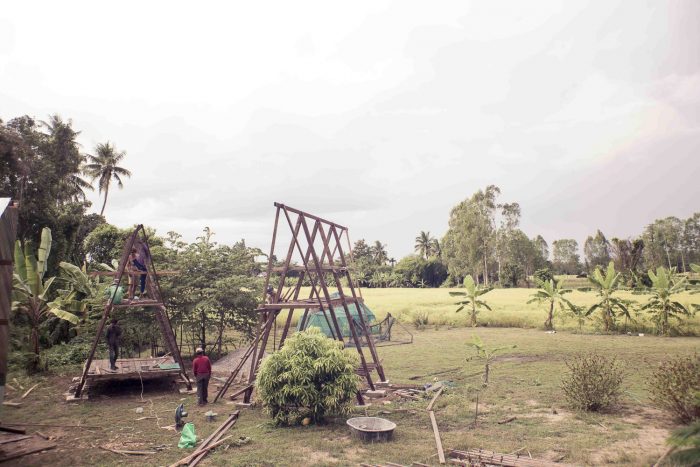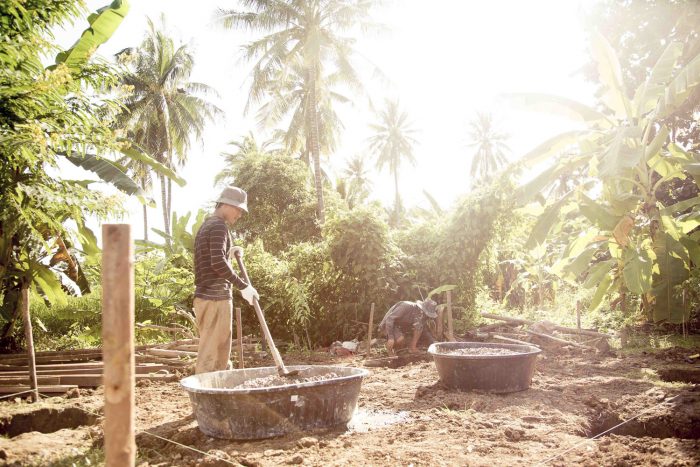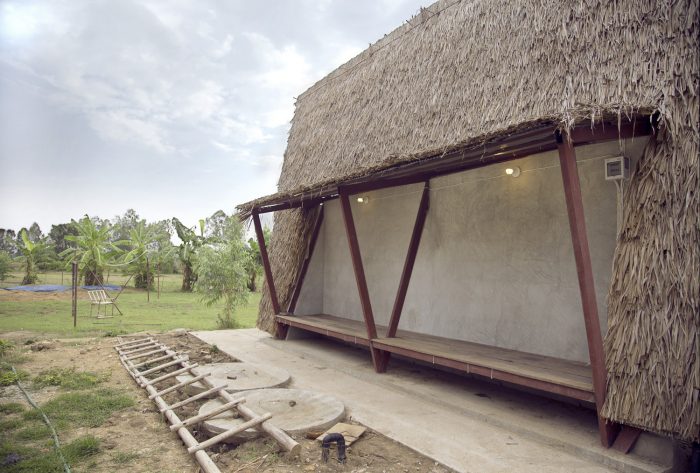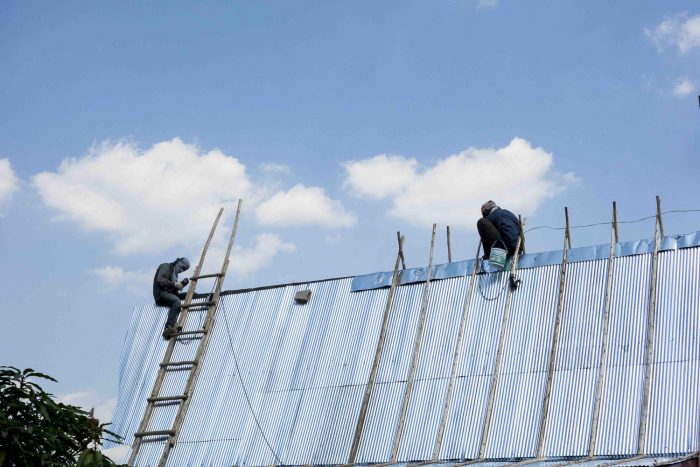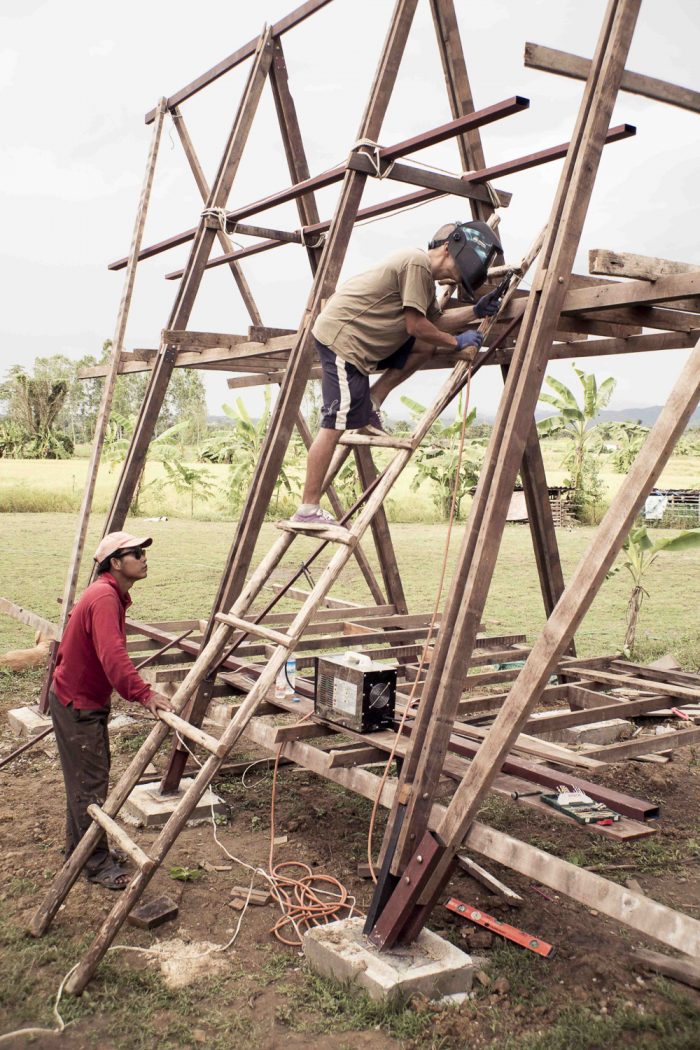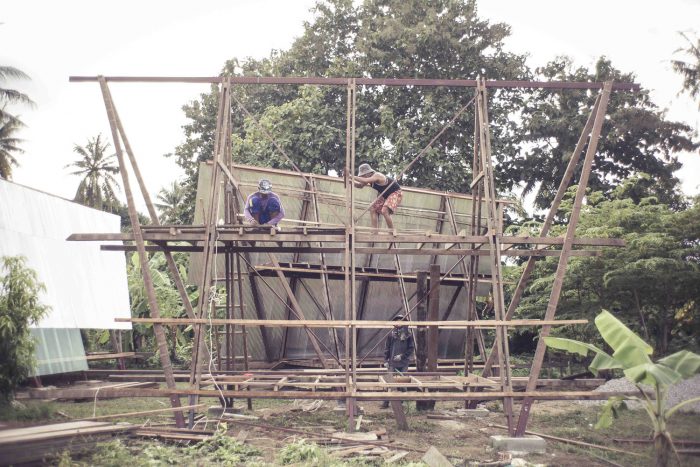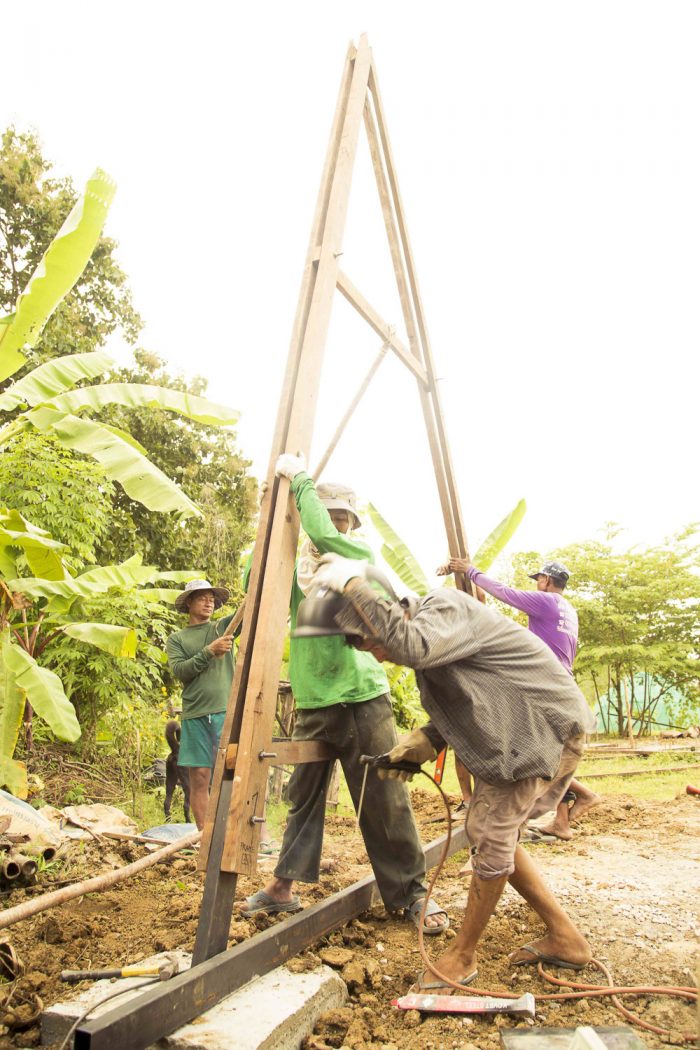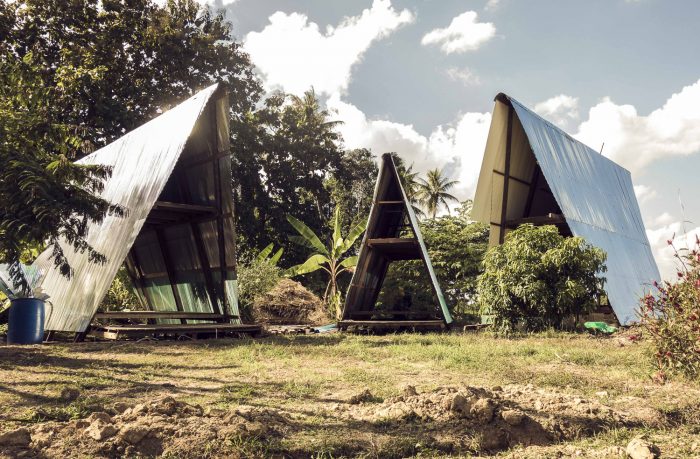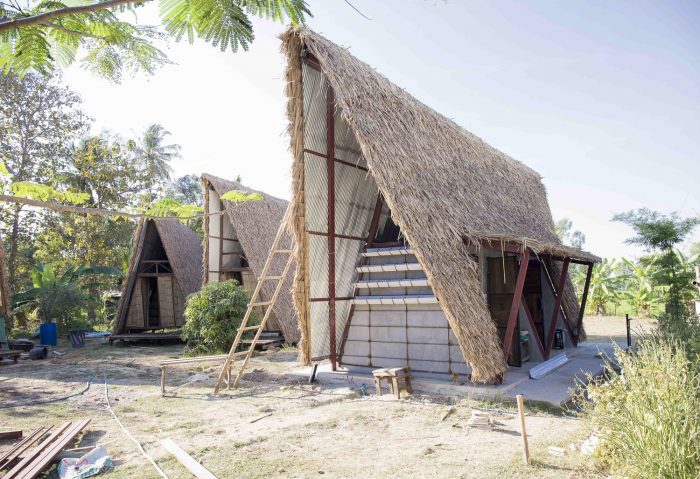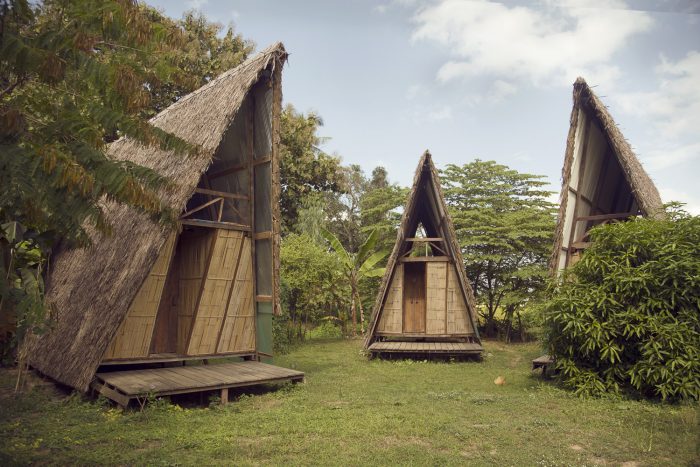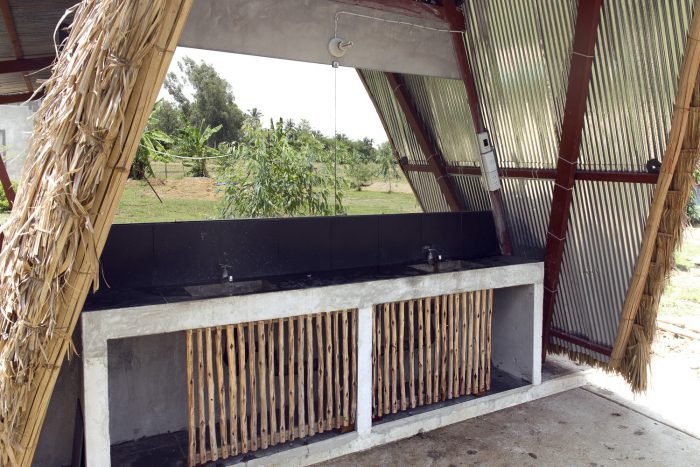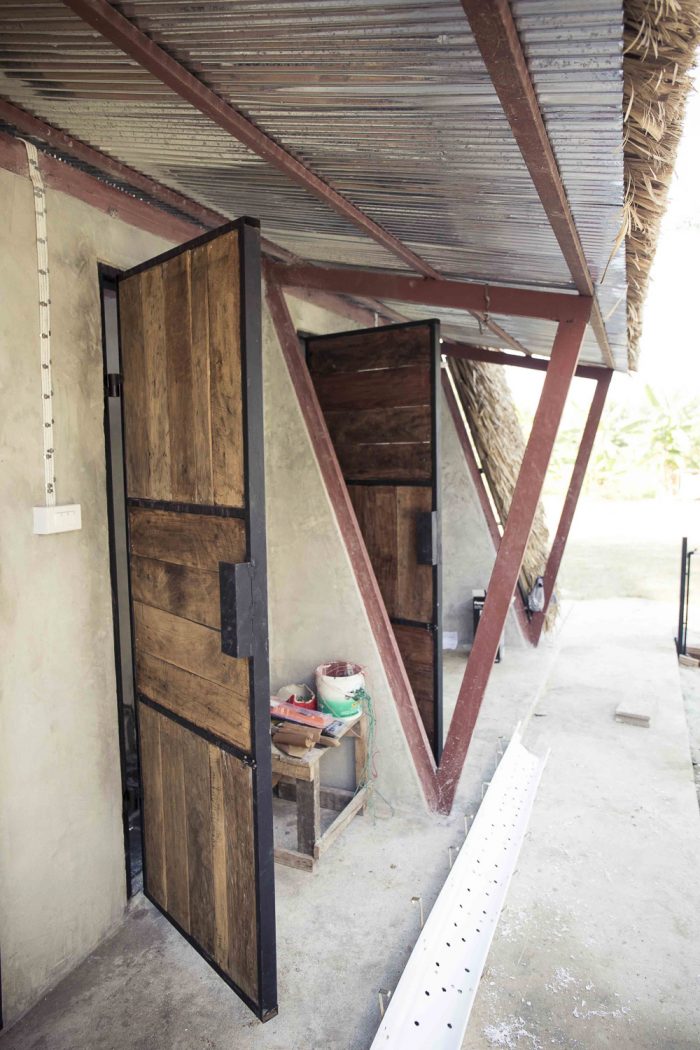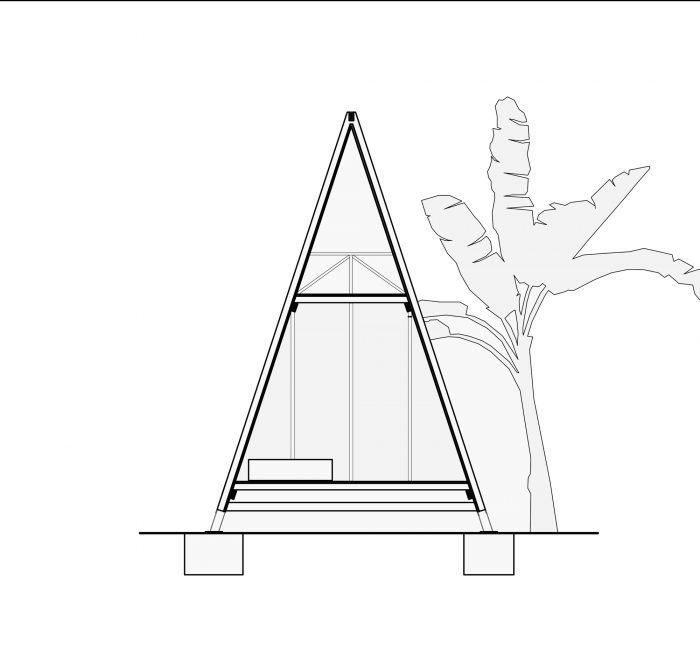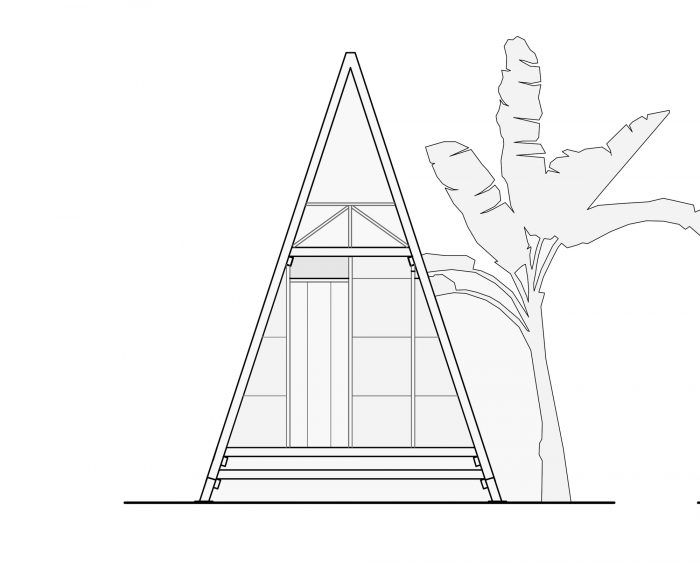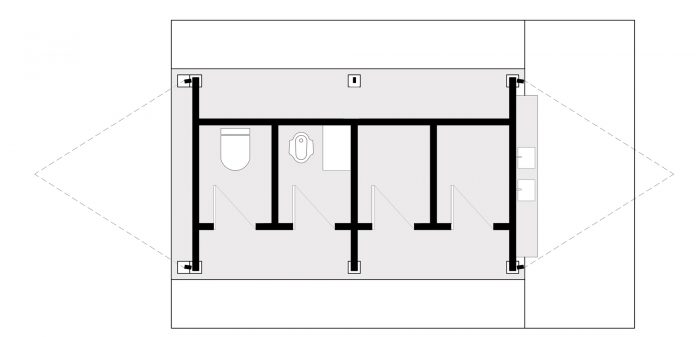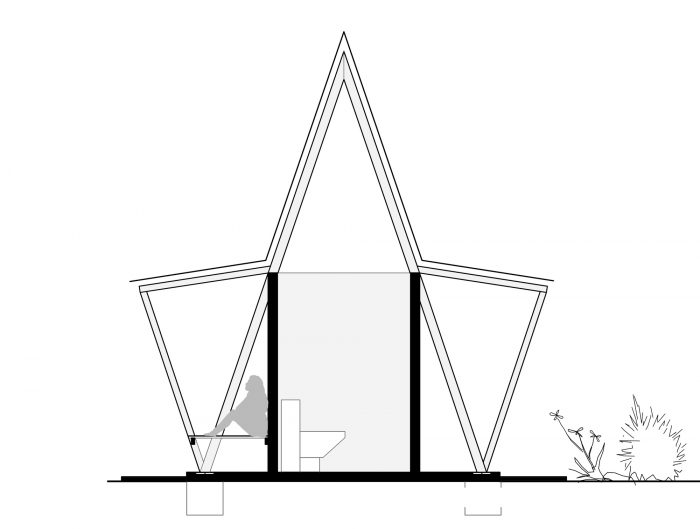在离泰缅边境仅几公里的地方,有一个青年中心,为克伦族移民青年提供教育服务。生活在这个中心的青年被吸引到这里,因为这里靠近为移民社区提供技术和职业培训项目的机构,使他们有机会继续接受教育。华辉的设计打破了这些机构的传统设计,将实用性最大化,而很少考虑到居住在这些空间的青年的复杂社会需求。华辉的设计以其三角形的结构和层叠的垂直花园,为青少年提供了自己的私人空间,让他们可以尽情地发展和追求自己的教育目标。
Just a few kilometers away from the Thai-Burma border, adjacent to a natural reservoir, lies a youth center providing educational services to Karen migrant youth. The youth living in this center are drawn to this location due to its close proximity to institutions offering immigrant communities the opportunity to further their education through technical and vocational training programs. The design of Hua Fai transgresses conventional designs of such institutions which maximize utility with little regard for the complex social needs of the youth inhabiting these spaces. The design of Hua Fai with its triangular structure and cascading vertical gardens provide youth with their own private space to flourish and pursue their educational goals.
华辉项目的目标是扩建现有的设施,以满足社区内越来越多的青少年接受教育项目的需求。扩建工程包括建造8个寝室、一个公共开放区和盥洗室供学生使用。建造了五个独立的单元,其中四个单元被对称地分割成八个独立的空间,作为私人房间使用,第五个单元是一个盥洗室(卫生设施),设有淋浴和厕所。
The objective of the Hua Fai project was to expand existing facilities to accommodate the increased number of youth accessing education programs in the community. The expansion involved the building of eight sleeping units, a communal open area and washroom for the use of the students. Five independent units were built, four of them were divided symmetrically to create eight independent spaces to be used as private rooms, and a fifth unit, a washroom (hygiene facility), houses the showers and toilets.
这些安排的前提是两个主要目标。
– 控制屋顶上的阳光照射量,避免舱室内过热。由于该地区的热带草原气候,在规划这个项目时,暴雨和太阳辐射都是主要的考虑因素。通过将阴影一个个投射到另一个阴影中,大大减少了太阳光的直射量。
The arrangements were premised upon two main objectives:
• To control the amount of sunlight exposed on the roofs and avoid excessive heat inside the cabins. Due to the tropical savanna climate of the region, both heavy rains and solar radiation were major concerns when planning for this project. By projecting shadows one into another, the amount of direct sun light is reduced drastically.
– 为了创造一个公共空间,通过将私人区域的通道定位为一个开放空间,作为一个聚集区来实现。这种安排,沿用了卡伦村民使用的类似空间设计,鼓励住户之间的互动。
• To create a public space, achieved by orienting the access of the private area into an open space, which acts a gathering area. The arrangement, following a similar spatial design used by Karen villagers, encourages interaction among dwellers.
体积设计源于Estacion Espacial Arquitectos的原始概念 “Casa Techo”,这是一种解决紧急住房的方法,即 “一个屋顶就是一座房子”。应急单元的概念经过修改,以适应该设施的永久性,并考虑到这种情况下的环境和社会条件。由于东南亚地区的森林砍伐加剧,老房子被小心翼翼地拆除,以保留未损坏的木材,然后在二手市场上出售。这些回收的木材被用来建造单元的结构和地板。三个垂直的框架作为建筑的骨架,支撑着屋顶的重量,并划分了内部空间,而两侧的两个倾斜框架则有助于保护每个单元前的露台。鉴于该地区极端的气候条件,在季风季节容易出现暴雨,因此必须将建筑抬高,以避免水对结构的破坏。为了将木质框架从地面抬起,采用了锚定在轻型地基上的单一钢结构。
The volumetry derives from the original concept of Estacion Espacial Arquitectos “Casa Techo”, an aproach to a solution for emergency housing that states that “a roof is a house”. The emergency unit concept was modified to adapt to the permanent nature of this facility, accounting for the environmental and social conditions of this context. Due to increased deforestation in this part of South East Asia, old houses are carefully dismantled in order to retain the undamaged pieces of timber which are later sold in a second-hand market. This reclaimed wood was used to build the structure and flooring of the units. Three vertical frames act as the skeleton of the construction, holding the weight of the roof and dividing the inner space, while two inclined frames on each side help to protect the terraces sitting in front of every unit. Given the extreme weather conditions of this area, prone to heavy rainfall during monsoon season, it was mandatory to elevate the building to avoid water damage to the structure. A single steel profile anchored to light foundations was used in order to raise the timber frames from the ground.
屋顶设计借鉴了当地的建筑元素,最大限度地利用了当地现有的材料。屋顶由三层组成:内层为铝锌,用螺丝固定在木材结构上,使其不透雨;中层为垂直放置的桉树树干,以创造通风条件;上层为社区内当地组装的甘蔗叶。玻璃纤维板的水平地面开口用于将光线引入房间的底层。
The roof design borrows elements from local construction found in this area, which maximizes the use locally available materials. The roof is comprised of three layers; An inner layer of aluzinc, screwed to the timber structure to make it impermeable to rain, a middle layer of eucalyptus trunks placed vertically to create ventilation, and an upper layer of sugarcane leaves locally assembled within the community. Horizontal floor level openings of fiberglass panels were used to bring light into the ground floor of the rooms.
洗手间单元也采用了同样的策略和几何形状。由于这是一个潮湿的区域,所以使用了钢型材来形成骨架,三层的屋顶和混凝土砖墙,划分了内部的四个小分区。四个外墙都有不同的功能,四扇门分别通往淋浴或厕所。面对稻田,是开放式的洗漱区。面向聚集空间的长边有一个座位区,面向综合体通道的墙面上建有一个垂直花园,欢迎孩子们进入土地时的到来。
The washroom unit is built with the same strategy and geometries. Since it is a wet area, steel profiles were used to form the skeleton, a triple layered roof and concrete block walls which delimitate the four small divisions inside. All four facades have different functions; four doors leading to either showers or toilets. Facing the rice field, the open sink area. A seating zone on the long side facing the gathering space and a vertical garden is built on the wall facing the access to the complex, welcoming the kids when accessing the land.
采用的施工工艺结合了农民工的专业培训和对当地条件的深入了解。团队由来自边缘化社区的接受培训的移民建筑工人组成,由一名建筑工程师和一名建筑师监督。为了适应工人的技能和有限的施工工具,精心挑选了用于施工的技术和材料。
The construction process used combined the professional training of the migrant workers with a deep understanding of conditions on the ground. The team consisted of immigrant construction workers in training, from marginalized communities, supervised by a construction engineer and an architect. The techniques and materials utilized for construction were carefully selected in order to accommodate the skills of the workers and the limited tools available for construction.
建筑师:Estudio Cavernas
面积: 151 m²
年份:2017年
摄影:Alejandro Sanchez
厂家: 无品牌
Architects: Estudio Cavernas
Area: 151 m²
Year: 2017
Photographs: Alejandro Sanchez
Manufacturers: No Brand

